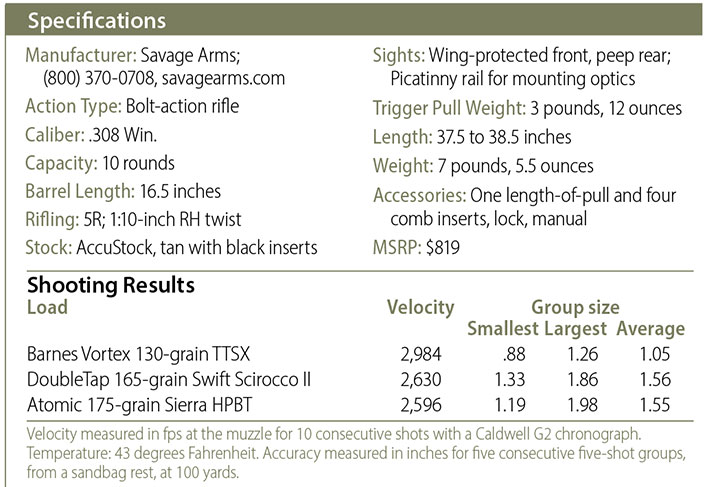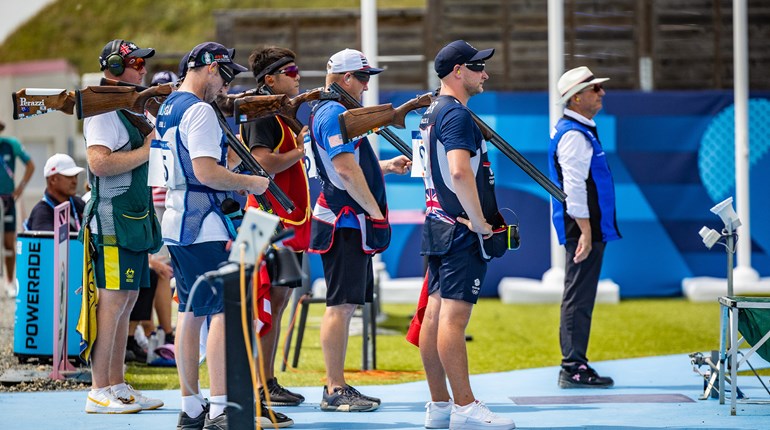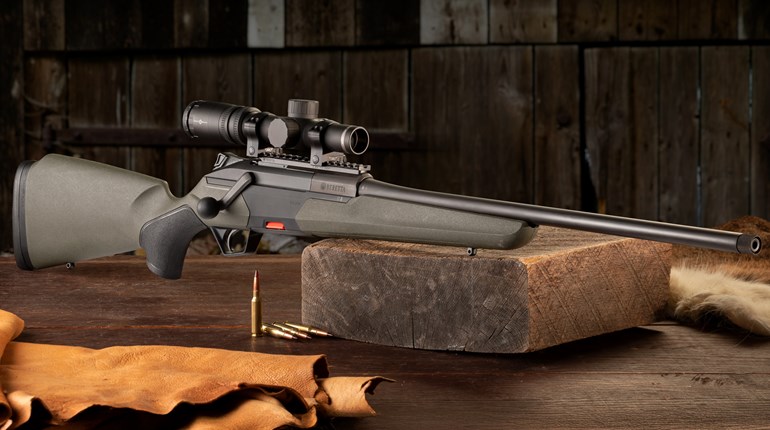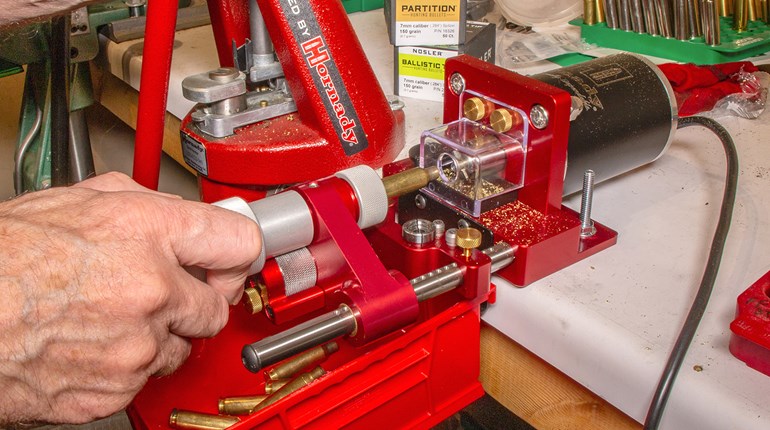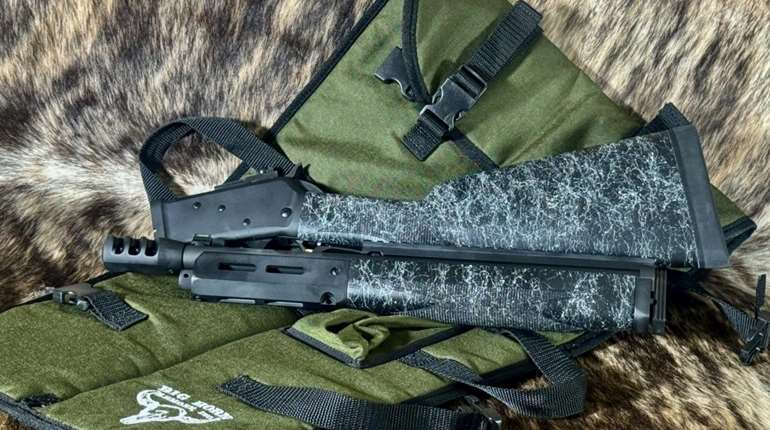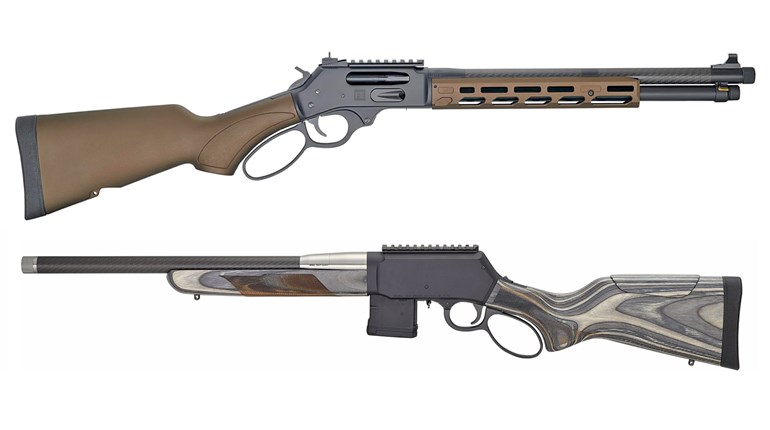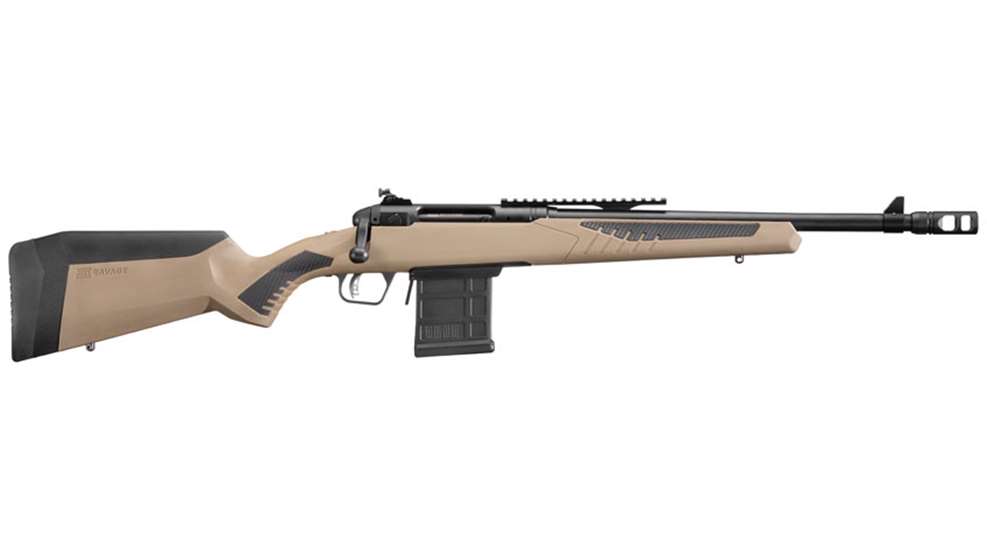
Jeff Cooper conceptualized the scout rifle and established specific guidelines regarding its length, weight, chambering and sights. He intended it to be the ideal rifle for someone operating remotely and alone in a scouting or hunting capacity. The modern translation of Cooper’s conceptualized carbine now describes any rifle with a forward-mounted scope as a “scout.” This is partly because Cooper also defined a scout rifle as a general-purpose rifle, which is a vague description for a specifically described tool. Since 1999, Savage Arms has offered several rifles with the “Scout” name. Most recent is its new-for-2018 Model 110 Scout rifle. Like all new-millennium interpretations of Cooper’s concept, the 110 Scout embodies the spirit of his vision, but would be best described as a general-purpose rifle of the modern era.

When building the Savage Arms 110 Scout rifle, the company started with its proven 110 action, which comes standard with a three-position, tang safety. The manufacturer attached a heavy-contour barrel measuring .70-inch just forward of the front sight. Its muzzle is threaded, but comes with a large and aggressive brake that’s nearly 1 inch in diameter. The front sight—just behind the brake—is a banded affair, with a sloped-center-post and protective steel wings that are three-quarters of an inch high.
A 16-slot, 6.63-inch Picatinny rail is attached to the forward receiver, via two screws in the common scope-base holes, and to the barrel by one screw. This rail allows for the mounting of a scout scope or red-dot sight. Out of the box, the rail was loose; Loctite was added and it was tightened before testing. (You might want to check this before mounting a scope if you buy one of these rifles.)
A Williams receiver sight is mounted to the rear of the action via the two rear scope-base- mounting holes. This excellent sight is fully adjustable for windage and elevation, and the peep disk, with a .09-inch hole, can be screwed out, leaving you with a much larger ghost-ring aperture, with a diameter of .19-inch. The sight is also set high, and this makes transition between the open sights and forward-mounted optic easier, without a great disparity in cheek weld on the stock.

The stock is really the big news with the Savage Arms 110 Scout. It’s the new AccuStock, which is a modular, synthetic affair that accepts various inserts to make it easily adaptable to the shooter and sight system. You can replace the stock’s comb with inserts in a variety of heights that will allow you to establish a good cheek weld while lining up your eyes perfectly with the open sights, scout scope, red-dot or even a traditional riflescope. (You can mount a standard magnified optic if you remove the rail and rear sight.) Similarly, inserts can be installed to extend the length-of-pull from 12.75 to 13.75 inches.
All of this is more important than it might initially appear. Establishing a correct cheek weld is paramount to fast and accurate off-hand shooting. Engagement speed will suffer if you have to wiggle your head around behind the sight, and accuracy is degraded when a solid cheek weld is not established. Similarly, trying to work with a rifle with a length-of-pull that’s too long is like an average-size fellow trying to walk on crutches sized for Kevin Durant. But, there’s more to the AccuStock. It also features an integral, rigid-rail system embedded in the stock and fore-end. Rather than unidirectionally engaging the action at one or two points, the AccuStock engages the action in three dimensions, along its entire length. Undoubtedly this, in conjunction with the heavy barrel, helps the Savage Arms 110 Scout shoot quite well.
By virtue of a polymer base plate, Savage has adapted the 110 Action to feed from Magpul AICS detachable magazines. The rifle ships with a 10-round magazine, but will work with the shorter five-round version, too. The magazine release is located between the magazine and the trigger guard. It might appear long—long enough to permit inadvertent activation—but I did not have that problem. And, the lever could easily be shortened if desired. A single cartridge can still be inserted through the ejection port and chambered, but the magazine must be removed to be loaded.
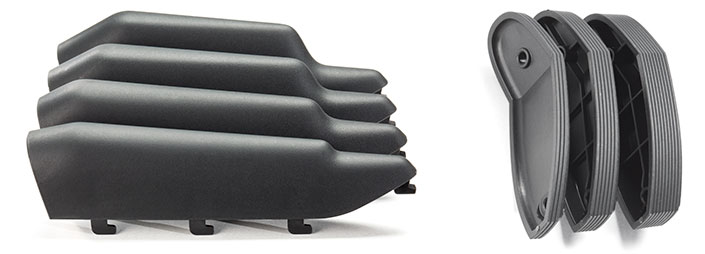
From the bench, the Savage Arms 110 Scout delivered precision on par with what you would expect from Savage rifles, and velocities were the norm for what is ordinary from a 16-inch barrel. Where the rifle really shined was away from the bench. With the ability to adjust the stock to suit the shooter and sight system, it provides a nice ergonomic interface. Snapshooting—which is considered a forte of the scout rifle—was fast and accurate with the open sights as well as the 4X Weaver scout scope.
I fired 260 rounds through the rifle and experienced no stoppages. However, the bolt did bind a couple times under hard work when chambering cartridges. The AccuTrigger was very crisp, but out of the box broke at 3.75 pounds. Fortunately, it is adjustable. I ran the rifle through my field course, snap-shooting torso-size steel targets and precision shooting 6-inch steel targets, from 60 to 160 yards, using field-shooting positions. The Savage Arms 110 Scout performed better than average when compared to other scout-like rifles I’ve tested, including all commercial and several custom variants.
As far as scout rifle purists or Jeff Cooper—if he were still with us—are concerned, the Savage Arms 110 Scout is not a true scout rifle. One of the hallmarks of his concept was a rifle weighing 7.5 pounds (at the most) and ideally closer to 6.5, with the optical sight and sling in place. The 110 Scout weighs 7.5 pounds out of the box. Topped with the compact and light Weaver 4X scout scope, and fitted with a Galco RifleMann sling, the 110 Scout weighs more than 8.5 pounds. The rifle, however, should have tremendous appeal to those looking for a one-rifle answer to the general-purpose-rifle question.
